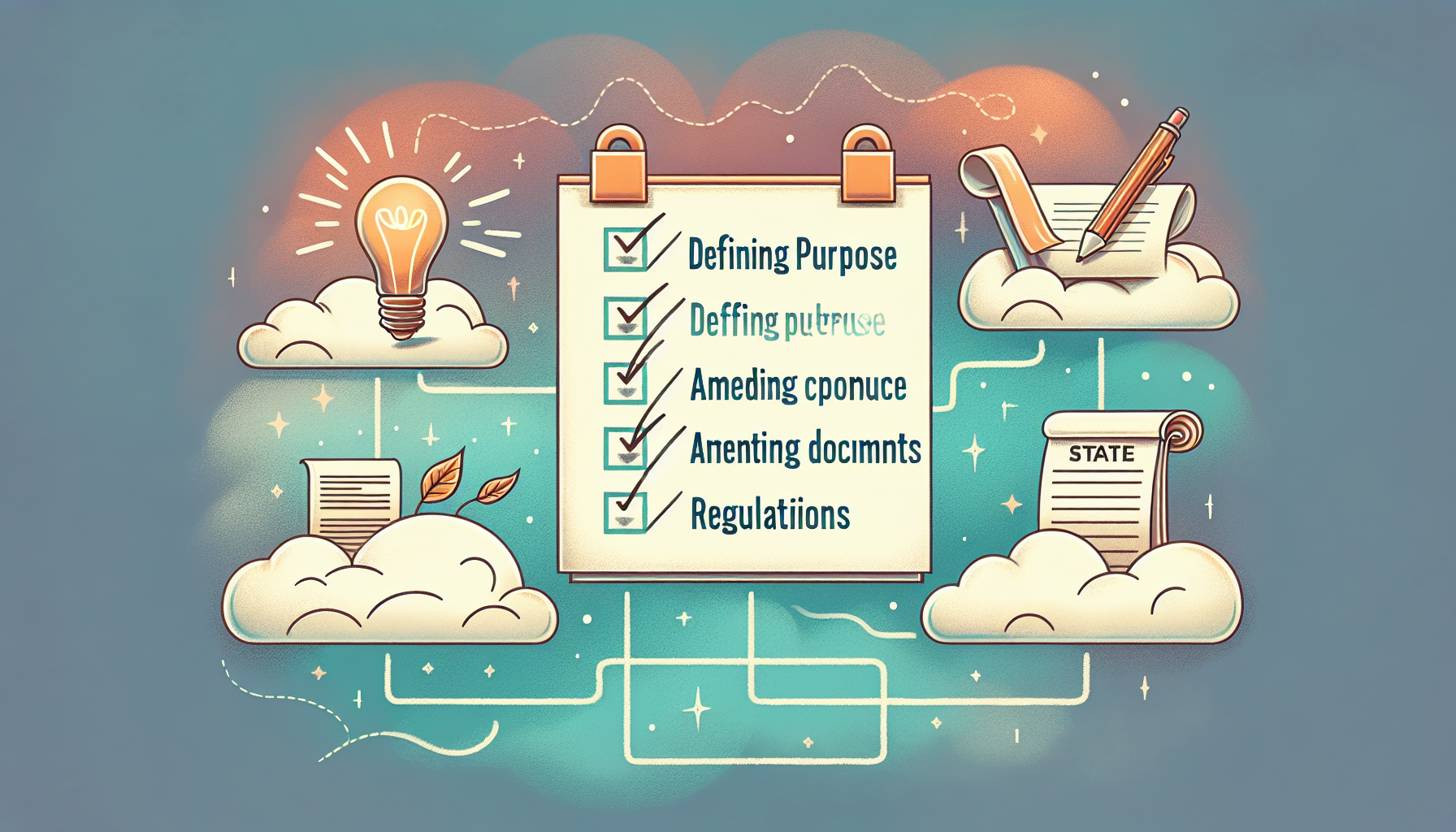Short Answer:
Public Benefit Corporations (PBCs) merge profit and social/environmental goals. They legally prioritize broader impacts over just shareholder gains, offering a balance between profit and public good. PBCs differ from standard corporations and nonprofits, attracting impact investors and building brand reputation amidst unique legal and regulatory landscapes.
Introduction & Background
As a corporate lawyer with over a decade of experience, particularly in major real estate and venture capital transactions, my career has been shaped by roles at esteemed law firms like Lowndes, Drosdick, Doster, Kantor & Reed, P.A., and Locke Lord LLP. These experiences have equipped me with a deep understanding of the nuances of corporate law and its intersection with broader societal issues.
In today’s business landscape, a new breed of corporations has emerged. These entities, known as Public Benefit Corporations (PBCs), are not your regular profit-maximizing companies. They represent a legal commitment to balance profit-making with a dedication to social and environmental responsibility. But what exactly are PBCs, and how do they fit into the broader business ecosystem?
In this article, I delve into the concept of Public Benefit Corporations (PBCs), a novel business model that epitomizes the fusion of profit-making with social and environmental responsibility. Drawing on my legal expertise, I aim to unravel how PBCs operate within the complex legal and regulatory frameworks, differentiating themselves from traditional corporations and nonprofits. My goal is to provide a comprehensive analysis of PBCs, shedding light on their role in the modern business space and their potential to drive significant societal and environmental impact.
Key Takeaways
- Public Benefit Corporations (PBCs) are for-profit legal entities that aim to generate profit while creating positive social and environmental impacts, balancing shareholder interests with their broader mission.
- PBCs have been legally adopted in numerous US states since Maryland’s pioneering legislation in 2010, with high-profile companies such as Ben & Jerry’s and Patagonia adopting this structure to align their operations with societal goals.
- Public Benefit Corporations differ from traditional corporations with features like expanded fiduciary duty, limited liability protection for directors, and obligations for transparency via regular reporting on their public benefit performance.
Defining a Public Benefit Corporation

A Public Benefit Corporation (PBC) is a legally recognized entity that seeks to harmonize profit generation with a commitment to social and environmental accountability. A PBC is hybrid entity that, unlike a typical for-profit corporation, is motivated by a unique mission: the balancing act of generating profits while dedicating itself to the public good.
This fusion of profit-making, social good and public good makes PBCs a standout in the corporate world. They have a distinctive legal status and are obligated to operate in a responsible and sustainable manner. The primary goals of the organization extend beyond profit-making. They incorporate social and environmental considerations, ensuring their operations benefit shareholders and the larger society.
Legal Entity with a Purpose
Being a for-profit entity, a PBC organization aims to exert a positive influence on society and the environment. This objective is enshrined in their legal framework, making them a unique legal entity with a stated public benefit.
The state of Delaware, among others, has officially defined ‘public benefit’ for PBCs as a positive impact or reduction in negative effects on one or more categories of persons, entities, communities, or interests in a sustainable manner. This broad definition of benefit allows PBCs to focus on various social and environmental issues, making them a versatile vehicle for companies seeking to make a difference.
Balancing Profit and Public Good
Although a PBC organization is a for-profit entity, its operation differs from a conventional corporation. Rather than concentrating solely on shareholder value maximization, PBCs harmonize their profit-driven activities with a dedication to the public good.
This balance is guided by legal statutes and regulations, such as the Delaware statute. Unlike traditional profit corporations, which prioritize shareholder profits, this type expressly declare that profit is not their sole objective. They take into account the impact of their decisions on:
- employees
- customers
- the community
- the environment
This unique approach to profit generation sets them apart in the business landscape.
The Rise of Public Benefit Corporations

The concept of PBCs is not new. It was first introduced in 2010 when Maryland became the first state to pass benefit corporation legislation. Since then, the popularity of the organization type has grown, and to date, there are 27 states in the US that have similar supporting legislation.
This growing inclination of businesses to adopt the structure is not without reason. As an entity that allows companies to raise money while pursuing social and environmental goals, PBCs have been embraced by several high-profile businesses. Notable examples include:
- Ben & Jerry’s
- Patagonia
- Kickstarter
- King Arthur Flour
- Indigenous
These companies have successfully leveraged the public benefit organization structure to enhance their brand image and appeal to a wider audience.
Legislation and State Adoption
The growth of PBCs can be attributed to the widespread legislative support. More than 30 states, along with the District of Columbia, have passed legislation permitting PBCs. Maryland was the pioneer in this regard, passing the first legislation for this structure in 2010.
The legislation varies from state to state. Some states require companies to disclose specific public benefits, as determined by the company itself. This flexibility allows PBCs to focus on a wide range of social and environmental issues, thus catering to various societal needs.
High-Profile Examples
The power of the PBC structure is best exemplified by the companies that have adopted it. High-profile businesses like Kickstarter, This American Life, and Laureate Education have opted to operate as PBCs, embedding their commitment to social good within their legal framework.
Kickstarter, for instance, transitioned to formally embed their dedication to the creative community within their legal structure. Similarly, Laureate Education’s charter is dedicated to making a positive societal impact by contributing to the advancement of the countries in which they operate. These examples demonstrate how these corporations can align their commercial objectives with societal and environmental goals.
Key Features of Public Benefit Corporations

While PBCs operate within the broader business ecosystem, they possess unique features that set them apart from traditional corporations. These include an expanded fiduciary duty, limited liability protection for directors, and a commitment to transparency and reporting.
PBCs differentiate themselves from traditional corporations in the following ways:
- They prioritize social good and profit generation
- They offer liability protection for shareholders’ personal assets
- They empower the board to prioritize public benefits without facing legal repercussions.
PBCs also place a strong emphasis on transparency. They have an obligation to regularly report their performance in reaching their public benefit objectives. This promotes accountability and allows stakeholders and the public to evaluate the company’s effectiveness in meeting its social and environmental objectives.
Expanded Fiduciary Duty
One of the distinguishing features of PBCs is their expanded fiduciary duty. Unlike traditional corporations where directors are primarily tasked with maximizing shareholder wealth, PBC directors are required to consider the best interests of of all stakeholders when making decisions.
This expanded duty ensures that PBCs’ decisions align with their commitment to social and public good, in addition to shareholder interests. Enforcement of this expanded duty is conducted through derivative actions, with directors held accountable to their obligations. Failure to fulfill this expanded duty could lead to legal repercussions, such as facing lawsuits alleging a breach of fiduciary duty.
Limited Liability Protection
Limited liability protection is another feature that sets PBCs apart. In a PBC, owners’ personal assets are protected, and their liability is restricted to their investment in the corporation. This protection extends to directors, protecting them from accusations of wasting corporate resources when they act in the best interest of the public benefit.
The legal foundation for granting limited liability to PBC directors, similar to those in a C corporation, is embedded in the company’s certificate of incorporation. This legal protection gives directors the confidence to make decisions that prioritize public benefits, knowing they are protected from liability.
Reporting and Transparency
Transparency is crucial in PBCs. They are required to provide biennial reports to their stockholders, demonstrating their progress in promoting and achieving their public benefit purpose. While they are not obligated to make these reports accessible to the general public, the reporting fosters accountability and enables stakeholders to evaluate the company’s effectiveness in meeting its public benefit purpose goals.
Although they are not legally required to adhere to more rigorous reporting standards than those typically required, they can opt for more stringent reporting practices if they so desire. This flexibility allows them to demonstrate their commitment to transparency and accountability, further enhancing their credibility in the eyes of stakeholders.
Comparing PBCs to Other Business Entities

Though PBCs possess unique features and benefits, it’s crucial to contrast them with other entities such as B Corporations (B Corps) and non-profit organizations. Each of these entities has its own characteristics and serves different purposes.
PBCs are a legal designation established by state law, designed to pursue a profitable bottom line while also emphasizing the pursuit of a beneficial public purpose. B Corps, on the other hand, benefit corporations that are certified by the non-profit B Lab, indicating that they meet specific social and environmental standards as for-profit entities. Non-profit organizations are typically established for charitable or social purposes and are exempt from certain taxes.
PBC vs. B Corp Certification
While PBCs and B Corps may share similar goals, they differ in their structure and recognition. PBCs are a legal business structure, recognized by state law. B Corp certification, on the other hand, is a certification awarded by the non-profit B Lab to companies that demonstrate exceptional levels of social and environmental performance, public transparency, and legal accountability.
While PBCs are legally obligated to balance profit and purpose, it’s worth noting that B Corps voluntarily pledge to adhere to stringent social and environmental standards. This certification is not a legal status, but it provides a clear framework for companies to measure and improve their social and environmental performance.
PBC vs. Non-Profit Organization
Non-profit organizations share similarities with PBCs in their commitment to serving the community through charitable give. However, their operational and legal structure is quite different. Non-profit organizations, established for a charitable purpose or social causes, don’t pursue profit-making. Their charitable activities grant them tax-exempt status.
In contrast, established for profit companies, also known as PBCs, have the primary objective of serving the public interest. They are liable for income tax and shareholders are also obligated to pay an annual franchise tax, calculated based on the number of shares issued. This distinctive combination of profit-making and social impact sets PBCs apart from non-profit organizations.
Advantages and Challenges of Becoming a PBC
The process of establishing a public benefit organization involves a distinct blend of benefits and hurdles. On the upside, PBCs:
- Appeal to impact investors
- Enhance their brand reputation
- Provide limited liability protection for directors
- Foster accountability and transparency through consistent reporting.
On the flip side, transitioning from a traditional corporation to a PBC can be a complex process. It involves:
- Balancing public good with stockholder interests
- Formalizing a societal mission commitment
- Navigating specific challenges for parent corporations when establishing or converting subsidiaries
- Managing administrative and legal costs associated with acquiring and maintaining the structure status.
Attracting Impact Investors
One of the key advantages of PBCs is their ability to attract impact investors. These investors seek not only financial returns but also social or environmental benefits. By integrating a distinct social or environmental mission statement into their legal framework, they can appeal to this growing pool of investors.
The attraction to impact investors can notably boost employee recruitment, branding, and the overall reputation of the company. Impact investors assess social impact by examining criteria such as accountability, community engagement, treatment of employees and consumers, and allocating their investments to companies with notably positive social impact.
Enhanced Brand Reputation
Enhanced brand reputation is another advantage of transitioning into this corporation type. By demonstrating a commitment to social and environmental factors, PBCs can significantly influence their brand reputation, leading to a very positive effect on public perception of the corporation as socially responsible and environmentally conscious.
Companies that prioritize social and environmental responsibilities can attract and retain customers more effectively, leading to stronger loyalty, more profits, heightened employee engagement, and increased interest from investors. Notable examples of these organization types that have experienced an improved brand reputation include Allbirds, Patagonia, Kickstarter, and Ben & Jerry’s.
Navigating Legal and Regulatory Requirements
Despite the benefits, becoming a PBC is not without challenges. One major hurdle is the need to navigate complex legal and regulatory requirements. This includes:
- undergoing auditing and assessments
- reporting progress on delivering the public benefit purpose
- publishing an annual benefit report
- filing the Articles of Incorporation with the Secretary of State.
Upholding the structure status necessitates adherence to regulatory requirements. Companies are required to:
- Update their B Impact Assessment every three years
- Verify their updated B Impact score
- Ensure that they maintain a score of 80 points or above to retain their B Corp Certification.
Failure to meet these legal and regulatory requirements could lead to sanctions, including:
- fines
- back taxes
- interest
- in severe cases, involuntary dissolution
Therefore, companies considering becoming a PBC should be prepared to navigate these challenges.
Steps to Forming a Public Benefit Corporation

The process of setting up a public benefit corporation encompasses multiple steps. The first step is defining the public benefit purpose, which must be clearly stated in the company’s Certificate of Incorporation.
Existing corporations looking to transition into a PBC must modify their charter to incorporate a statement of purpose that advances one or more public benefits. This must be done in compliance with the applicable state’s legal prerequisites. Furthermore, they must adhere to state-specific regulations that oversee both their establishment and operation.
Summary
In conclusion, Public Benefit Corporations represent a new breed of corporations that balance profit-making with a commitment to social and environmental responsibility. They offer several advantages, including attracting impact investors, enhancing brand reputation, and providing limited liability protection for the board of directors themselves. However, becoming a PBC also entails navigating complex legal and regulatory requirements.
Despite the technological nature of the challenges, the rise of PBCs signals a shift in the business landscape towards a more sustainable and socially responsible approach. As more companies adopt the structure, it’s clear that the future of business is not just about generating profits, but also making a positive impact on society and the environment.
Frequently Asked Questions
What is a PBC in business?
A public benefit corporation (PBC) is a corporate entity legally structured to consider social good alongside maximizing shareholder value, allowing businesses to focus on both profits and benefits for society.
What is the difference between a B Corp and a PBC?
The main difference between a B Corp certification and a PBC is that while a B Corp certification can be forfeited and the business can return to a normal for-profit structure, a PBC is a distinct type of corporation that voluntarily adheres to specific standards.
What is the difference between nonprofit and public benefit corporation?
The main difference between a nonprofit corporation and a public benefit corporation is the ownership structure. A nonprofit corporation has no owners or shareholders, while a public benefit corporation does have shareholders who own the company.
What are the benefits of becoming a Public Benefit Corporation?
Becoming a Public Benefit Corporation offers benefits such as appealing to impact investors, enhancing brand reputation, and providing limited liability protection for directors. Additionally, it fosters accountability and transparency through consistent and reporting requirements.
What are the challenges of becoming a Public Benefit Corporation?
Becoming a Public Benefit Corporation can pose challenges including aligning public benefit with shareholder interests, formalizing a societal mission commitment, and incurring administrative and legal expenses. Transitioning involves navigating these hurdles.


